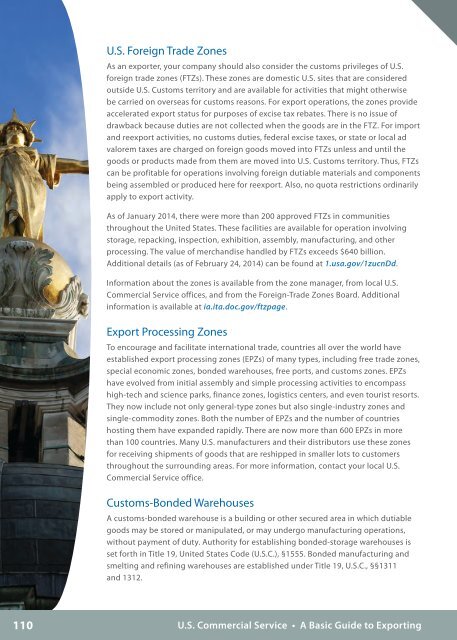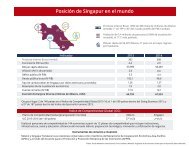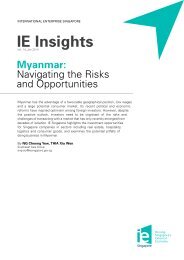basic-guide-to-exporting_Latest_eg_main_086196
basic-guide-to-exporting_Latest_eg_main_086196
basic-guide-to-exporting_Latest_eg_main_086196
Create successful ePaper yourself
Turn your PDF publications into a flip-book with our unique Google optimized e-Paper software.
U.S. Foreign Trade ZonesAs an exporter, your company should also consider the cus<strong>to</strong>ms privil<strong>eg</strong>es of U.S.foreign trade zones (FTZs). These zones are domestic U.S. sites that are consideredoutside U.S. Cus<strong>to</strong>ms terri<strong>to</strong>ry and are available for activities that might otherwisebe carried on overseas for cus<strong>to</strong>ms reasons. For export operations, the zones provideaccelerated export status for purposes of excise tax rebates. There is no issue ofdrawback because duties are not collected when the goods are in the FTZ. For importand reexport activities, no cus<strong>to</strong>ms duties, federal excise taxes, or state or local advalorem taxes are charged on foreign goods moved in<strong>to</strong> FTZs unless and until th<strong>eg</strong>oods or products made from them are moved in<strong>to</strong> U.S. Cus<strong>to</strong>ms terri<strong>to</strong>ry. Thus, FTZscan be profitable for operations involving foreign dutiable materials and componentsbeing assembled or produced here for reexport. Also, no quota restrictions ordinarilyapply <strong>to</strong> export activity.As of January 2014, there were more than 200 approved FTZs in communitiesthroughout the United States. These facilities are available for operation involvings<strong>to</strong>rage, repacking, inspection, exhibition, assembly, manufacturing, and otherprocessing. The value of merchandise handled by FTZs exceeds $640 billion.Additional details (as of February 24, 2014) can be found at 1.usa.gov/1zucnDd.Information about the zones is available from the zone manager, from local U.S.Commercial Service offices, and from the Foreign-Trade Zones Board. Additionalinformation is available at ia.ita.doc.gov/ftzpage.Export Processing ZonesTo encourage and facilitate international trade, countries all over the world haveestablished export processing zones (EPZs) of many types, including free trade zones,special economic zones, bonded warehouses, free ports, and cus<strong>to</strong>ms zones. EPZshave evolved from initial assembly and simple processing activities <strong>to</strong> encompasshigh-tech and science parks, finance zones, logistics centers, and even <strong>to</strong>urist resorts.They now include not only general-type zones but also single-industry zones andsingle-commodity zones. Both the number of EPZs and the number of countrieshosting them have expanded rapidly. There are now more than 600 EPZs in morethan 100 countries. Many U.S. manufacturers and their distribu<strong>to</strong>rs use these zonesfor receiving shipments of goods that are reshipped in smaller lots <strong>to</strong> cus<strong>to</strong>mersthroughout the surrounding areas. For more information, contact your local U.S.Commercial Service office.Cus<strong>to</strong>ms-Bonded WarehousesA cus<strong>to</strong>ms-bonded warehouse is a building or other secured area in which dutiabl<strong>eg</strong>oods may be s<strong>to</strong>red or manipulated, or may undergo manufacturing operations,without payment of duty. Authority for establishing bonded-s<strong>to</strong>rage warehouses isset forth in Title 19, United States Code (U.S.C.), §1555. Bonded manufacturing andsmelting and refining warehouses are established under Title 19, U.S.C., §§1311and 1312.110U.S. Commercial Service • A Basic Guide <strong>to</strong> Exporting





